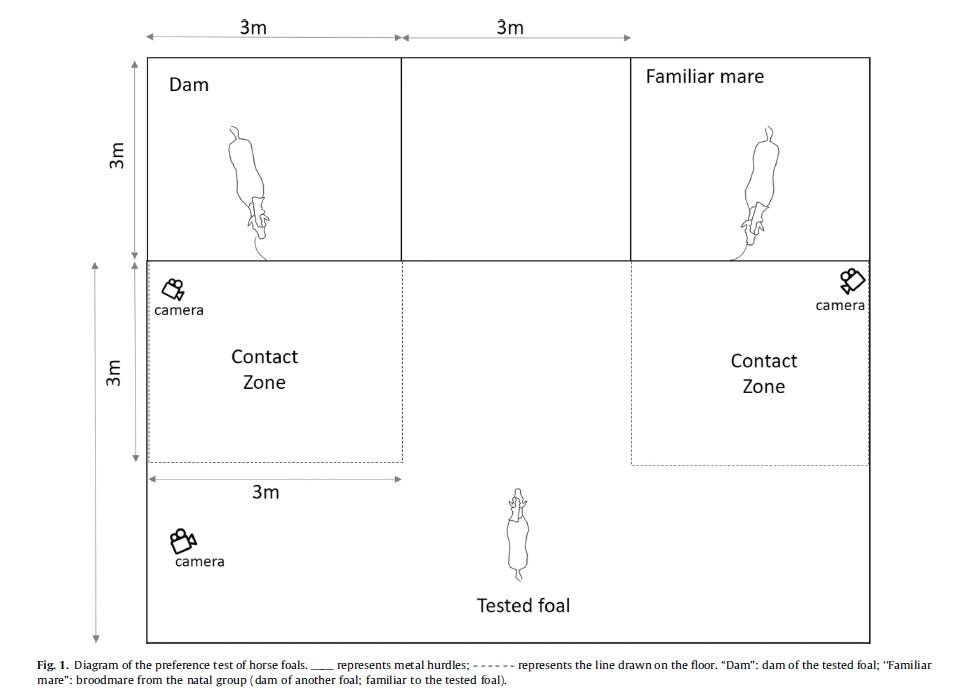Baby season is upon us, so I thought a post about the mare-foal bond would be suitable.
The first thing we need to understand about the relationship between a mare and her foal is that it is about more than nursing—and that nursing is about more than food.
In a natural state, most foals will be weaned around nine months. But this doesn’t mean they will stop nursing: there are many examples of youngsters suckling their dams even when they are no longer dependent on milk for nutrients, simply as a comfort behavior.
Even after weaning, mares and foals will remain close until it is time for the youngster to leave the natal band. This happens around 1.5–three years of age, but some fillies stay with the family group for life and many join groups on the same home range, thus remaining close to their dams even after they “move out.”
This natural process is very different to traditional weaning practices. Most foals are abruptly separated from their dams at four to six months, a very young age when they are still fully dependent on her for survival and comfort.
Artificial weaning is traumatic
There is an ever-growing body of evidence that early separation of dam and foal is extremely stressful and traumatic. Henry et al., in their 2020 review paper Domestic Foal Weaning: Need for Re-Thinking Breeding Practices?, state that “artificial weaning is one of the most stressful events in a foal’s life.”
They go on to list some of the risks associated with early weaning:
- Emotional distress and injury due to panicking
- Disrupted eating and sleeping patterns
- Aggression towards humans and other foals
- Redirected suckling
- Slowed growth
- Decreased immune responses
- Disrupted gut microbiota
- Stereotypic behaviors such as crib biting and wood chewing
To this comprehensive list, I would like to add a wider consideration for the impacts of early weaning on cognitive, emotional, and social development as well.
While it has not been directly studied in horses, studies on other species indicate that a stable attachment to a caregiver (often a mother) is vital to the development of adult skills such as emotional regulation and empathy.
What effect does the trauma of an abrupt separation from the dam have on the developing mind of a young foal?
I will leave this question unanswered.
Foals remember their dams even after a long time
Last year, a study by Lansade et al. investigated whether foals remember their dams even after a prolonged separation. They abruptly weaned 34 group-housed Welsh pony foals (15 fillies and 19 colts) at seven months. Five months later, they tested whether they remembered their dams in a preference test.
The test consisted of a paddock with two mares tied up facing the inside (see diagram below). One mare was the foal’s mother, the other was another mare from the same group who the foal was familiar with.

The experimenters made the following records:
- which mare was approached first
- how much time the foal spent in proximity to each mare (i.e. within the area called “contact zone” in the diagram above)
- how much time the foal spent sniffing each mare
- how much time the foal spent snapping at each mare
- how frequently the foal looked at each mare
Regardless of sex, a significant majority of foals approached their dams first and spent more time sniffing them and less time snapping at them, indicating that they remembered who their mothers were even after five months of separation.
Interestingly, while both fillies and colts were more likely to approach their dam first and spend more time sniffing her, fillies showed a stronger preference than colts. This can perhaps be explained with the natural tendency for colts to disperse wider after they leave their natal band, indicating that they may have less inclination to develop a strong bond with their dams.
So, yet another study to add to the growing body of evidence of the profoundness and complexity of equine social relationships.
Importantly, we need to keep in mind that the bond between mares and foals is an emotional one, not a practical one. Mares and their offspring remain close for years after nursing has stopped.
Unfortunately, they are rarely given the chance in modern horse management systems.
Even though the scientific evidence is overwhelmingly in favor of letting foals stay with their dams until at least eight to nine months of age, and of weaning them gradually to avoid the stress and trauma of an abrupt separation, this is far from what is practiced.
This is a problem, and we need to talk about it more.
Sources and further reading:
- Lansade et al., 2022. Weaned horses, especially females, still prefer their dam after five months of separation. Animal 16, 10
- Henry et al., 2020. Domestic Foal Weaning: Need for Re-Thinking Breeding Practices? Animals 10
- Lansade et al., 2018. Progressive habituation to separation alleviates the negative effects of weaning in the mother and foal. Psychoneuroendocrinology 97
- Wulf et al., 2018. The stress response of 6-month-old horses to abrupt weaning is influenced by their sex. Journal of Veterinary Behaviour 23
- Bruschetta et al., 2017. Effects of partial versus complete separation after weaning on plasma serotonin, tryptophan and pituitary-adrenal pattern of anglo-arabian foals. Livestock Science 198
- Henry et al., 2012. Adults may be used to alleviate weaning stress in domestic foals (Equus caballus). Physiology & Behavior 106
This article was originally published on theequineethologist.substack.com and reprinted here with permission.
Be social! Follow Renate Larssen:







 June 16, 2023
June 16, 2023 





















